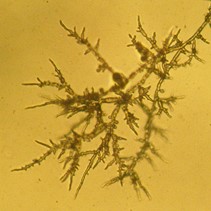
Tedmund J. Swiecki and Elizabeth A. Bernhardt, Phytosphere Research
Support provided by the Santa Clara Valley Water District, Midpeninsula Regional Open Space District, and Phytosphere Research. Additional support provided by the San Francisco Public Utilities Commission through a grant to the US Forest Service, Pacific Southwest Research Station.
Version 12/18/2019
For many pests and diseases that affect leaves and stems, visual inspections can be effective for identifying affected plants or groups of plants. Unfortunately, visual inspections of aboveground plant parts are not useful for detecting Phytophthora root rots (Osterbauer et al. 2014). Infection occurs long before visible symptoms develop on aboveground plant parts, so diseased plants may not show visible symptoms. Many drought tolerant California native species growing under nursery conditions do not show obvious top symptoms even when nearly all of their roots are decayed.
Careful inspection of roots can identify some infected plants before root rot is extreme, but this process is very time consuming. Plants need to be removed from containers to be inspected. Soil and roots dislodged in the process of root inspection can spread contamination unless plants are handled carefully following phytosanitary protocols. In many woody species, healthy roots and diseased roots may not show strong differences in color, so a simple visual inspection of roots may not be informative. At early stages of disease, many healthy-appearing roots will be present, and it may be necessary to pull apart or wash out the rootball to find symptomatic roots. It can also be difficult to distinguish between Phytophthora root rot and root turnover caused by abiotic issues (such as excessive heat or episodes of drought stress). In summary, visual root inspections alone will not reveal all infected plants and are not diagnostic without confirmation by testing.
This document provide descriptions and details of Phytophthora testing procedures referenced in Best Management Practices (BMPs) for Producing Clean Nursery Stock. Note that some of the methods are still being tested to determine limits of sensitivity, and additional tests are under development. Very few of the methods in use have been compared side by side for sensitivity to a range of Phytophthora species.
Osterbauer, N.; Lujan, M.; McAninch G.; Lane, S.; Trippe, A. 2014. Evaluating the efficacy of the systems approach at mitigating five common pests in Oregon nurseries. J. Environ. Hort. 32(1):1–7.